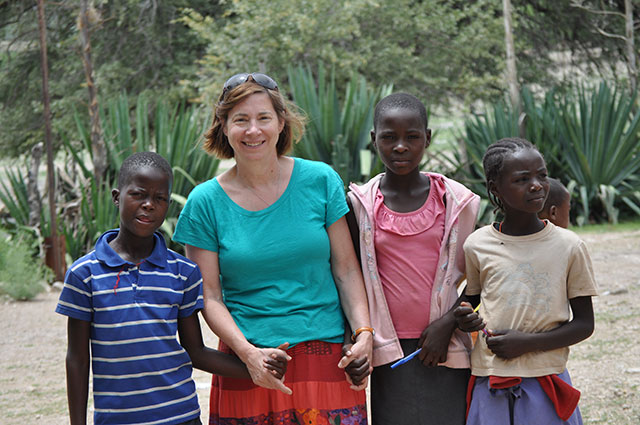Page 123 • (1,373 results in 0.044 seconds)
-

beautiful room with chandelier lights and large windows—it was really wonderful. Then I walked out and played my piece. Mr. Feltsman’s first comments were uncushioned criticisms, and I was a little shaken even though I knew to expect it. After the class, I took notes on all he had told me and watched the other students. It seemed as if Feltsman was pretty blunt in his comments to all of his students—how did you react to that? Yes, he was very blunt! His initial words were particularly critical, but I
-

of initiatives is your team currently working on? Our team is working on some exciting initiatives and opportunities to expand our gateway. We are one of the largest gateways for trade in North America. That is profound because our population is so much smaller than that of other large gateways like California, New York, or New Jersey. We are in the major leagues as a port gateway, and it is an extremely competitive environment. That is why we are working on some critical initiatives to expand
-
physician assistants, and other health professionals are all partners in the clinical education of APRN students. As a practice discipline, experienced APRNs are an active and critical component of APRN clinical education in that they are able to afford APRN students with enculturation to their future role as APRNs.” https://www.aacnnursing.org/Education-Resources/APRN-Education/APRN-Clinical-Preceptor-Resources-Guide NONPF The Preceptor website of the National Organization for Nurse Practitioner
-

colored-pencil books out there at the time.” (Her Colored Pencil Portraits Step by Step is still one of the top books in the art market for painting portraits.) Kullberg said she believes hand-drawn art is critical in this age of technology. “The moving of the hand goes through the prism of the soul,” she said. “It puts one’s mark, heart and life to it. Something happens between the eye and hand as it goes through the artist.” Kullberg believes anyone can learn to draw with the right training. In 1999
-
language forms an integral part of the process of second language acquisition. The use of machine translation by students to complete assignments in courses in which second language acquisition is a primary goal subverts the aim of gaining practice and skill in thinking for oneself in the target language. Moreover, it short-circuits the capacity of students to appreciate and gain skill in the use of idiom in the target language, an aspect of translation in which machine translators are notoriously weak
-
computer programming and problem-solving using real datasets from a variety of domains such as science, business, and the humanities. Introduces the foundations of computational thinking, modeling and simulation, and data visualization. CSCI 144: Introduction to Computer Science– An introduction to computer science including problem solving, algorithm design, object-oriented programming, numerical and non-numerical applications, and use of data files. Ethical and social impacts of computing. ENG 323
-

me freaked out.” But she has since wrapped her mind around the challenge, and it looking forward to the task. Her advice for the new teachers in Alaska, Namibia, or for the many other PLU educators who will be entering the classrooms in the coming year? Weiss pauses for a moment. Then the ideas come in quick succession. Treat all kids as highly capable, they will rise to your expectations. Champion innovative thinking and look beyond the standardized test scores. Get kids to think. And one last
-
level, everyone is going to assume that and go into it thinking, “I’m not going to be able to get this.” If we can make it clear that it just takes a little bit more work, but you can do this, they can be accessible to everybody. This might be a little bit of an over-generalization, but as an example, Shakespeare has been used in prison systems to reach out to inmates and they’ve connected with it whether or not they’ve had any experience with classics before. We’ve seen Shakespeare adapted in many
-

thoughtful inquiry and embracing community are part of the fabric of the Pacific Crest Trail, just as they are a part of the fabric at PLU. Ultimately, those lessons have helped her come to terms with the unpredictability of the journey she is on. “It’s about being open to any experiences life is going to throw at you,” she said. Ballinger said her hike underscored her love of the environment that grew out of the Antarctica study abroad program she was a part of during her time at PLU. “I’m thinking of
-
: PLU Students Engage the Quest for Racial Justice Dr. Emily Davidson: Marginalized Memories, Critical Conversations: The Literature Classroom as a Space for Imagining Racial Justice Dr. Kevin O’Brien: It Doesn’t Matter If I Mean Well: What 21st Century White People Might Learn from Malcolm X and Martin Luther King Dr. Samuel Torvend: The Art of Social Protest: Contemporary Visual Images That Provoke, Inspire, and Challenge Ms. Angie Hambrick, Dr. Joanna Royce Davis and Ms. Laree Winer: Whose Story
Do you have any feedback for us? If so, feel free to use our Feedback Form.


